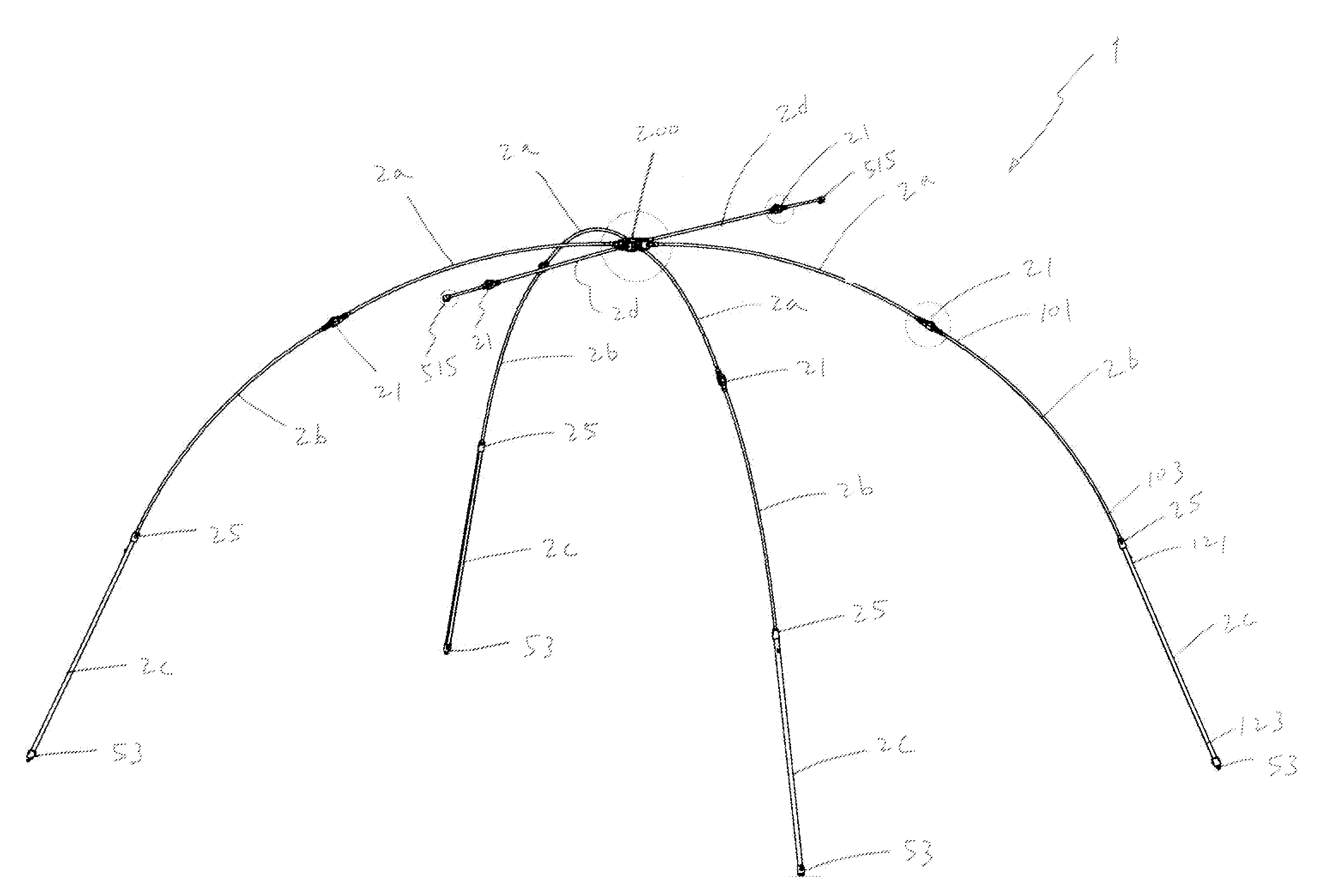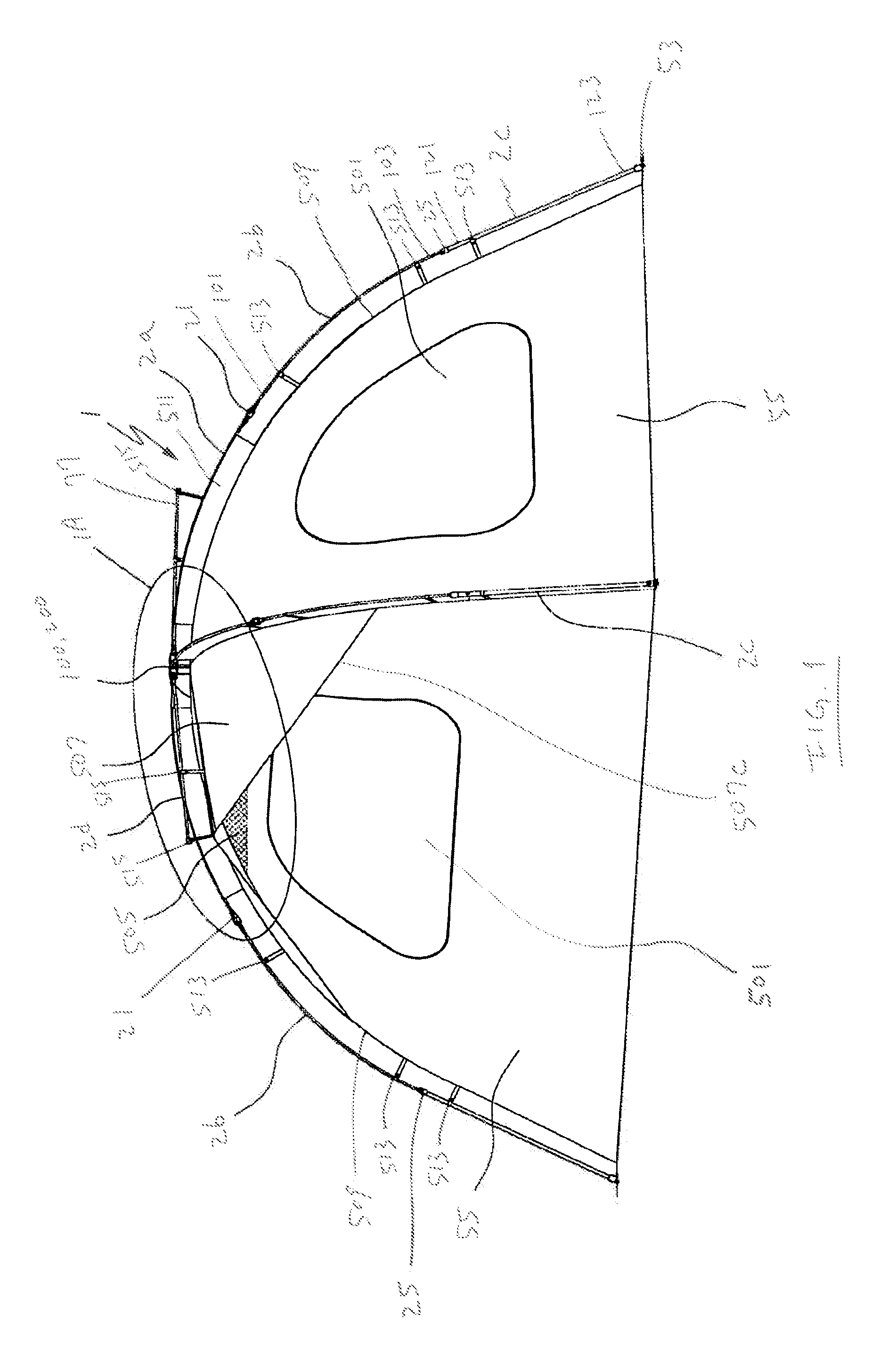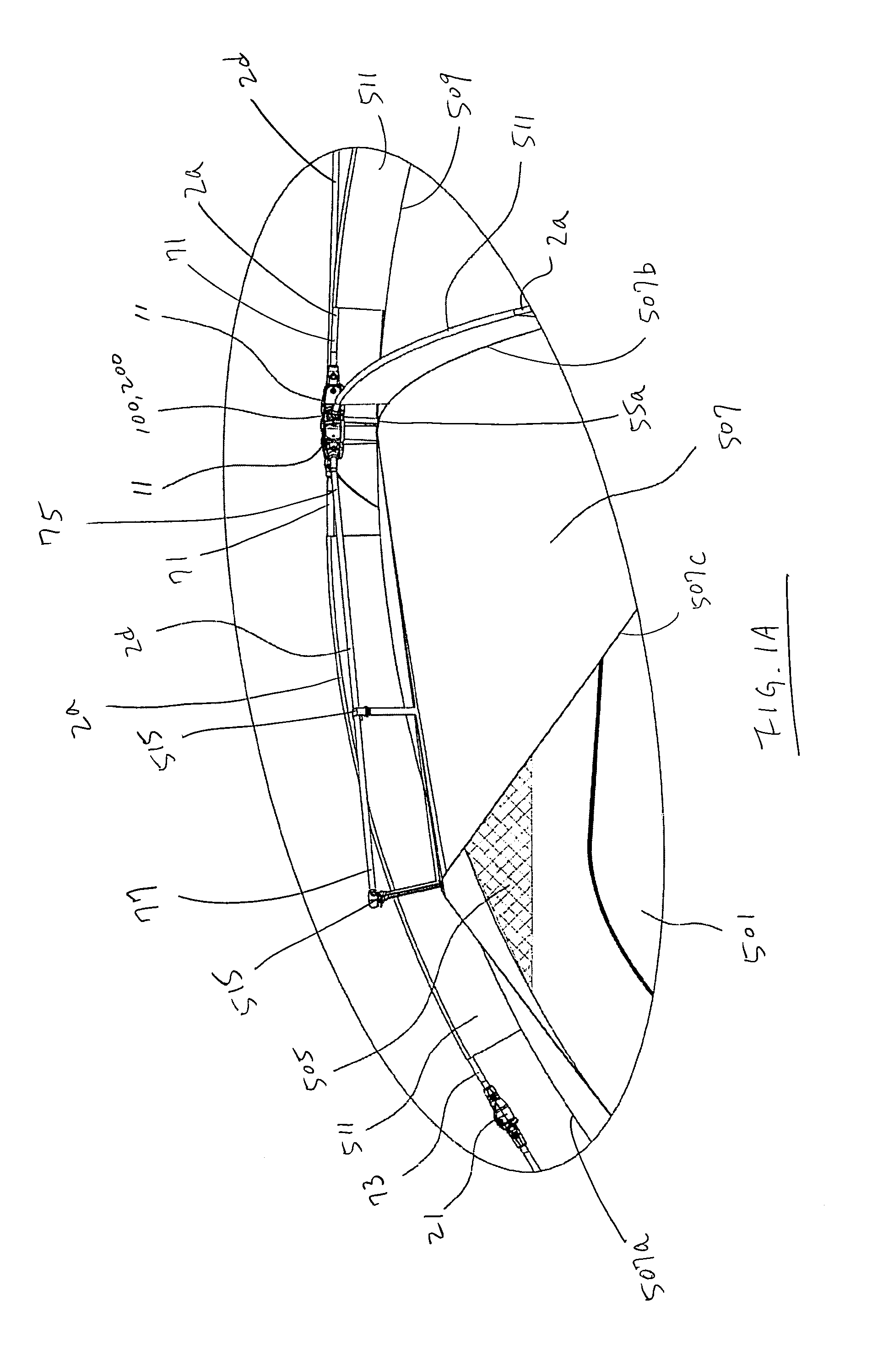Foldable tent with integrated ventilation system
a ventilation system and tent technology, applied in tents/canopies, building types, constructions, etc., can solve the problems of increased labor, additional manufacturing costs, and instant tents of umbrella types, and achieve the effect of improving ventilation and simply opening and closing
- Summary
- Abstract
- Description
- Claims
- Application Information
AI Technical Summary
Benefits of technology
Problems solved by technology
Method used
Image
Examples
first embodiment
[0041]In the first embodiment, shown in FIG. 6, the base 12 uniformly extends radially and provides a surface 12a below the pivoting pins 4 and caps 3 so that the first ends of each roof pole and eave pole 71, 75 can pivot to and from the open and closed configurations within each corresponding slot 11. The base 12 is extended to cover the area under the caps 3 to relieve the stresses exerted on the roof poles 2a but one of ordinary skill in the art will recognize that the base 12 need not extend fully to provide a surface to cover the entire length of the caps 3.
second embodiment
[0042]Referring to FIGS. 8A-D, in the second embodiment, the base 12 extends radially outward except that the base 12 does not extend above the radially outer portions of the slots 11 where the caps 3 are pivotally connected to the walls 51, thereby forming an opening or a void 61. Thus, in the open configuration, as shown in FIG. 8D, the bottom surface of the base 12b restricts the caps 3 and first ends of each the roof pole and eave pole 71, 75 from any upward pivotal movement beyond the bottom surface of the base 12b. As a result, the roof pole and eave pole first ends 71, 75 are secured in a substantially horizontal position or substantially parallel to the bottom surface of the base 12b. Referring to FIG. 11A, in the closed configuration, the opening 61 provided on the radially outer portions of the slots 11 allow the pole second ends 73, 77 to pivotally move upward while all or a substantial portion of the caps 3 located at the pole first ends 71, 75 remain below a horizontal ...
PUM
 Login to View More
Login to View More Abstract
Description
Claims
Application Information
 Login to View More
Login to View More - R&D
- Intellectual Property
- Life Sciences
- Materials
- Tech Scout
- Unparalleled Data Quality
- Higher Quality Content
- 60% Fewer Hallucinations
Browse by: Latest US Patents, China's latest patents, Technical Efficacy Thesaurus, Application Domain, Technology Topic, Popular Technical Reports.
© 2025 PatSnap. All rights reserved.Legal|Privacy policy|Modern Slavery Act Transparency Statement|Sitemap|About US| Contact US: help@patsnap.com



